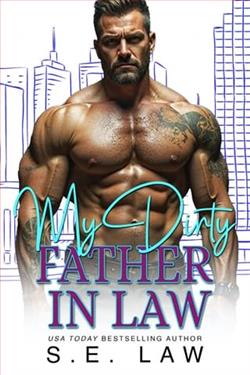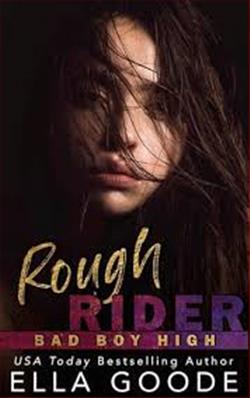Page 61 of Lyon of Scotland
“No jester! A handsome officer of Scotland.” She smacked his arm lightly. “Can I show you my drawings now, dear Lyon?”
“Please do.” He ushered her to the table, then went to the door. “Mr. Grant!” he called. “Is that tea ready?”
The sketches wereall he expected and more. Precisely detailed and skillfully done in black ink, the drawings depicted a royal coat of arms and variations for a shield, seal, banner, and badge. Hannah had jotted notes on another page about the component carefully chosen to include the traditional elements of the royal coat of arms, with a few subtle changes to individually represent King George.
“Excellent,” Dare murmured, paging through the drawings. “You have made these nicely unique to this king. Explain a bit of what you’ve chosen.” He recognized the elements in the blazonry—the language of armorial designs—but he wanted to hear her thinking.
“Scotland needs to be foremost in the design, so a small Scottish red lion rampant is above the royal crown and helm. I placed the supporters, the unicorn of Scotland and the golden lion of England, left and right of the large shield. Quartered there are the gold lions of England, the red lion of Scotland, and the golden harp of Ireland. Just like your tabard coat, sir.”
“Very similar. Go on. You made some changes to the unicorn and lion.”
“As Prince Regent, George’s shield carried bars to represent the eldest son and heir to the kingdom. Those are now replaced with tiny crowns. The Scottish unicorn wears a chain—not for subservience to England, but to mark the taming of the unicorn that was added under James the Fifth of Scotland.”
“Very good. And you replaced the motto in this.”
“Instead of ‘Honi soi qui mal y pense,’ the motto of England’s Order of the Garter, I added the chain and pendant of the Order of the Thistle for Scotland, and that motto. You wear a similar chain with your ceremonial coat.”
“Aye, Lord Lyon acts as head of the Order of the Thistle.”
“Our Lord Lyon is a model of chivalry.” She smiled.
“He tries.” He chuckled. “These are beautifully done, with subtle but important changes. But there is the question of ownership.”
“I meant to give these to Sir George. But there was no chance before we left.”
He frowned, considering the sketches again. “He has not seen them?”
“Not yet. I did the research and worked on them at home and thought to present them when I had finished. I was not sure he wanted me to do them. Charles Dove knew about them, but he was the only one—until you.”
“Did you work on these in the office?”
She shook her head. “I was taking them to show Sir George the day that Sir Frederic picked me up and gave me that dose.” She shrugged. “The day I caused so much trouble for you.”
“The day that brought us together, you mean.” He touched her shoulder, traced his fingers down her arm, and took her hand to kiss it.
“My lass, here is what I think. Officially, mind you, not as your husband.”
“Aye, Lord Lyon.” She folded her hands.
“If you did these on your own, at home, not paid for the work, then these drawings belong to you, not the College of Arms. What becomes of them is up to you.”
“Do you truly think so?”
“As Lord Lyon, absolutely. Sir George has not seen them. He wants his artists to prepare the Scottish and the Englisharmorials for the coronation, and he would be very interested in these. But if Charles has not mentioned them, no one knows.”
“Am I Sir George’s artist, or yours?” She gave him an impish glance.
He tipped his head. “Which do you want to be?”
“Yours.”
“My dear.” He brushed his fingers over her hair. “But I do not want you to be confined in an art room drawing little emblems every day. You have a great deal of talent and your own artwork to do.”
“I want to do portraits and such. And I want to be your helpmate.”
“Then we will make sure you have the time for both. Be mine, then.” He opened his arms. “My artist, my wife, my helpmate, my lover, anything you like.”
“All that,” she said, and flowed into his arms. Holding her close, he then reminded himself they were in his office. He released her with a kiss on her head.















